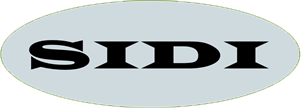What is an eco-city?
Eco-cities (ecological cities) enable its population to attain a good standard of living while at the same time minimising the use of natural resources. This is carried out by using local resources more efficiently, namely soil, air, water and sunlight. To complement such parameters, planting native vegetation to control the urban microclimate (and provide food and shelter for wildlife) is also significant. SIDI supports and promotes technologies able to help provide the above said.
Parklands
SIDI supports parklands because they are natural corridors and sanctuaries which foster biodiversity and provide the city population access to flora and fauna, and recreation.
Fully Integrated Transportation
SIDI strongly believes that city needs should first be outsourced from surrounding areas to reduce transport (or energy) costs and subsequently greenhouse emissions. Currently, SIDI is cooperating with the ‘gardeners of Illawarra’ to unite and incorporate such a practice in Wollongong.
White Roofs
According to the Lawrence Berkeley National Laboratory Heat Island Group in Berkeley, California, white roofs reduce energy use by about 20 percent. “The average total square footage of a home in the United States is more than 2,000 (more than 200 m2). Professor Akbari says “if you need cooling in the summer and heating in the winter, no matter where you are, a white roof will most likely save you money.”[1] All things considered, white roofs will save energy costs and thus are deemed important, especially for Australian conditions. SIDI promotes white roofs in Wollongong and nationwide.
Green Roofs
Green roofs improve on existing roofs. They use high quality water proofing and root inhibiting membranes, drainage-filtration systems and lightweight growing media for ‘interlocking’ plants into fixed positions. That is, suitable plants are not planted in the medium but ‘contained/secured’ within particular areas of the roof. The benefits of having green roofs (or urban greening) are many, such as aesthetic appeal, community gardens, recreational areas, help moderate building temperature and which subsequently reduce air-conditioning costs, help moderate ‘the urban heat island effect’, help reduce noise pollution, improve air quality, and so on.
Sky Lights
Skylight systems complement white roofs and solar panels. They let sunlight into buildings, thus avoiding the use of electrical power (e.g. lights/heating) during daylight hours. If households, shopping centres, government and industrial buildings adopt some king of skylight systems, to some degree, they would offset the equivalent of carbon emissions.
Solar Panels
“Solar energy is the cleanest and greenest source of renewable energy generated electricity available to help power your home, business or community building – and nowadays, the cheapest too!”[2] Instead of using fossil fuels, households can use solar energy for their everyday household appliances, e.g., hot water systems and swimming pools. By adopting solar technology, greenhouse gas emissions are significantly lowered, including energy bills. “In a country like Australia with abundant sun and rising electricity costs, a technology like solar, that requires no maintenance, makes no noise and produces electricity for 25 years will always have strong customer appeal.”[3]
Novel Products
SIDI associates have developed novel materials from recycled waste products to construct eco-homes or eco-villages. The factory is in Goulburn.
[1] By Amanda Kimble-Evans, February/March 2010 http://www.motherearthnews.com/Green-Homes/Cool-Roof-White-Roof.aspx#ixzz2CScw4QRd
